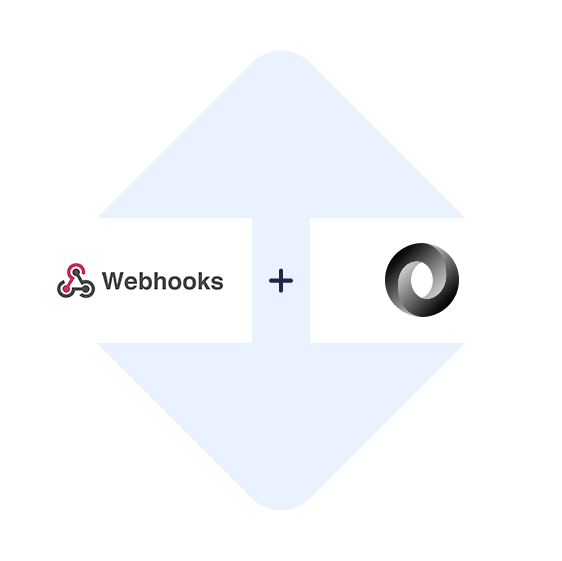- First you need to register in SaveMyLeads
- Choose what data to transfer from Webhooks to JSON
- Turn on auto-update
- Now data will be automatically transferred from Webhooks to JSON
Connect
Webhooks
to JSON

Sync Webhooks Leads to JSON
Implementing automation and setting up an automatic transfer of leads to JSON from other systems and services brings numerous advantages. It significantly reduces manual labor, minimizes errors, and ensures that your data is always up-to-date and accurate. By utilizing Webhooks, this automation facilitates real-time data synchronization, making your lead management process more efficient and responsive to incoming data.
To set up these integrations seamlessly, you can use SaveMyLeads, an online connector service. This platform simplifies the configuration of your JSON and Webhooks integration, allowing you to focus more on your core business activities. With SaveMyLeads, you can automate data transfer processes with ease, ensuring a smooth and streamlined workflow across your various digital platforms.
Integrate Webhooks with JSON
How it works?
1. Our system perpetually tracks data received through the Webhook;
2. The captured data is seamlessly transferred into a JSON format.
What do you need?
1. Set up Webhook for the data source;
2. Configure JSON as the target data format;
3. Activate automatic data transfer.
Webhooks notification to JSON
Implementing automation through JSON and Webhooks integration brings numerous advantages to your data transfer processes. By setting up automatic data transfers via Webhooks, you can ensure that information from various systems and services is consistently up-to-date and accurate. This automated approach reduces the likelihood of human error, saves time, and increases overall efficiency, creating a more streamlined workflow for your team.
Using an online connector like SaveMyLeads simplifies the setup of these integrations, allowing you to connect various services seamlessly. SaveMyLeads manages the intricacies of data mapping and transfer, converting information into a standardized JSON format for easy consumption. This means you can focus on analyzing the data and making informed decisions, rather than getting bogged down with the technical aspects of integration.
Q&A about Connect & Sync Webhooks with JSON
How to integrate Webhooks and JSON?
How long does it take to integrate Webhooks Leads to JSON?
How much does it cost to integrate Webhooks with JSON?
How many services ready to integration and send leads from Webhooks to JSON?
Use cases for integration Webhooks + JSON
1. Real-Time Inventory Management
In an e-commerce platform, Webhooks can be used to send updates about product inventory levels to a central database. When an item is purchased or restocked, a Webhook triggers and sends a JSON payload containing the updated inventory details. The central database then receives the JSON data and updates the inventory levels accordingly.
2. User Registration Notification
A web application that registers new users can integrate Webhooks to notify an external system about new sign-ups. When a new user registers, the Webhook is triggered and sends user details in a JSON format to a Customer Relationship Management (CRM) system. The CRM system receives the JSON data and creates a new contact entry.
3. Order Processing Automation
In an online ordering system, Webhooks can be used to automate order processing. When an order is placed, the Webhook sends a JSON payload with order details to a fulfillment server. The server receives the JSON data and enters the order into the warehouse management system for processing and shipping.
4. Weather Data Collection
Weather monitoring services can use Webhooks to collect and distribute real-time weather data. When sensor readings are collected, a Webhook triggers and sends the data in JSON format to a central weather analysis system. The centralized system receives the JSON data and processes it to generate weather forecasts and alerts.
5. Payment Transaction Recording
In a financial management system, Webhooks can be used to record payment transactions securely and efficiently. When a payment is processed through a payment gateway, the Webhook sends a JSON payload containing transaction details to an accounting system. The accounting system receives the JSON data and logs the transaction for further financial analysis and reporting.
If you want to quickly and independently set up integrations — Sign up and automate your workflows now. Try a free trial!
- 5 Connections
- 2'000 leads/month
- Real-Time Lead Sync
- Unlimited Ad Accounts
- Unlimited Ad Forms
- Email Support
- 25 Connections
- 5'000 leads/month
- Real-Time Lead Sync
- Unlimited Ad Accounts
- Unlimited Ad Forms
- Email/Chat Support
- Auto Failure Resync
- Unlimited Connections
- 20'000 leads/month
- Real-Time Lead Sync
- Unlimited Ad Accounts
- Unlimited Ad Forms
- Priority Email/Chat Support
- Auto Failure Resync
- Unlimited Connections
- 150'000 leads/month
- Real-Time Lead Sync
- Unlimited Ad Accounts
- Unlimited Ad Forms
- Priority Email/Chat Support
- Auto Failure Resync
- Dedicated Cloud Server
